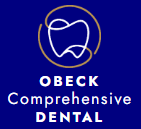To all of those who read this newsletter, thank you. I hope you find this monthly newsletter educational and interesting; perhaps it may even answer some questions about oral health that you may have been pondering. If you have any dental questions or topics you would like me to write about, please let me know! This month I will explain the rationale and techniques behind several different cosmetic dental procedures that can change the size, shape, color, and shape of teeth so that patients can enjoy a more confident and joyful smile.
Cosmetic bonding: This is a procedure that involves using tooth colored composite resin to make minor adjustments to the size and shape of teeth. Cosmetic bonding is often the appropriate procedure for restoring undersized and chipped teeth or closing small gaps between anterior teeth in one simple appointment.
First, the tooth is lightly beveled with a bur to create a fresh, uncontaminated surface area of tooth to bond the composite resin. Very little tooth structure is actually removed in this process and patients rarely need to be numbed for it. Next, the tooth is prepared with two solutions called “etch” and “bonding agent” which are then cured with an ultraviolet light to create a microscopic, chemically bonded layer on the tooth structure which the composite resin attaches to. Finally, the composite resin is placed and sculpted by the doctor and then light cured to chemically bond the resin to the tooth structure.
The resin is then adjusted and polished to ensure it is comfortable within the confines of the patient’s normal bite and looking beautiful and natural. The pros to cosmetic bonding is that it is relatively inexpensive and can be done in one quick appointment. The cons to cosmetic bonding is that it sometimes needs to be replaced or polished because it can be easily damaged and pick up stains. Furthermore, composite resin cannot be bleached so it can stand out if a patient’s teeth change in color over time.
Porcelain Veneers: Veneers are the gold standard for changing the size and shape of patient’s anterior teeth. These beautiful ceramic restorations are indicated when a patients wants to make major changes to the size, shape, color, and alignment of their anterior teeth. Porcelain veneers are a lot like the tooth equivalent of fingernail coverings that people use to lengthen and color their nails.
First, photographs are taken and a diagnostic wax up of is made from models of the patient’s teeth to show the patient what is possible and what the finished smile design will look like. Once the patient and doctor are in agreement on the size and shape of the teeth and share the same expectations, the veneering process begins. Initially, the patient is numbed and some tooth structure needs to be removed in order to make room for veneers. Typically 0.3 – 1.0 millimeters of enamel is removed on all of the teeth being veneered. Temporary veneers are then made chair-side from the diagnostic wax up and fitted on the patient who gets to demo their new smile for several weeks. In this time, adjustments can be made to ensure the final product will mimic the temporary veneers. Then, an impression and photos are taken and sent to a dental laboratory where a dental technician communicates with the doctor and makes the porcelain veneers. The patient then returns for another appointment to have the veneers chemically cemented to their teeth.
The pros about veneers is that they are quite durable and last for many years if properly taken care of. They are very esthetic and can truly change someone’s confidence and appreciation of their smile. The downside veneers is that they are expensive and the process takes several appointments and often involves 2 to 10 teeth per arch to achieve the proper proportions and results. It is important to note that orthodontics (braces or Invisalign) is sometimes needed BEFORE veneers in order to ensure optimal alignment and results. Furthermore, they cannot be whitened once they are cemented.
Resin Infiltration: This process is very similar to cosmetic bonding because it uses bonding agents and flowable composite resin to change the color of teeth. This procedure is appropriate for patients who have white splotches on their teeth. These “white spot lesions” can be caused by congenital defects, orthodontic brackets, and exposure to either too much or not enough minerals like calcium and fluoride during childhood. Resin infiltration requires no numbing and involves etching the splotchy areas of the tooth with a low grade acid to create microscopic porosities which are then filled in with flowable tooth colored resin and cured. This changes the color of teeth but does not change the size or shape.
Teeth Whitening/Bleaching: The main idea behind whitening is that peroxide gel is used to chemically alter the intrinsic color of teeth. I am going to write a separate issue all about whitening because there is a lot to talk about.
We have many pictures in our smile gallery of some “before” and “after” results from patients at our practice for all of these procedures.
Both Dr. Krist and I are properly trained and educated with advanced courses to carry out any of these cosmetic procedures. These cosmetic procedures can be life changing for patients and are often our favorite appointments to experience because the result is usually very joyful. Dr. Krist and I do not like to “sell” these procedures to patients; we prefer when patients ask us directly about changing the size, shape, and color of their teeth so we can educate them about the possibilities. If any of these procedures sound intriguing or applicable to you, please reach out to either Dr. Krist or myself so we can help you improve the confidence in your smile!
Sincerely,
Dr. John Obeck
